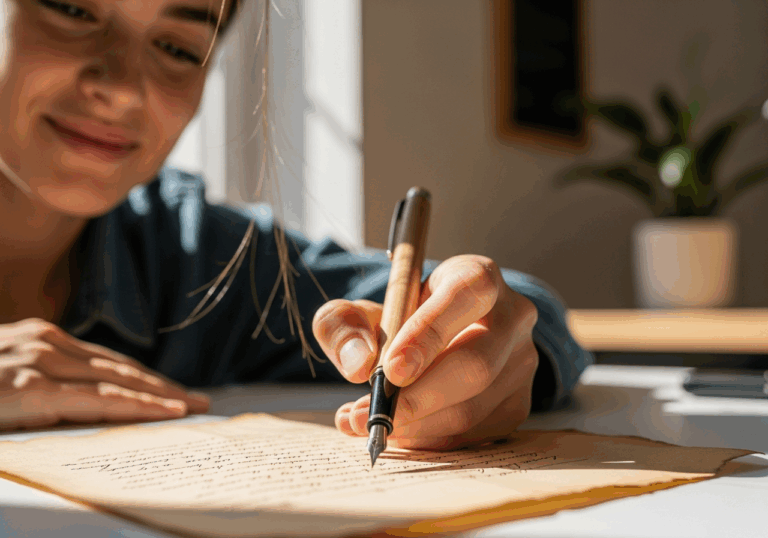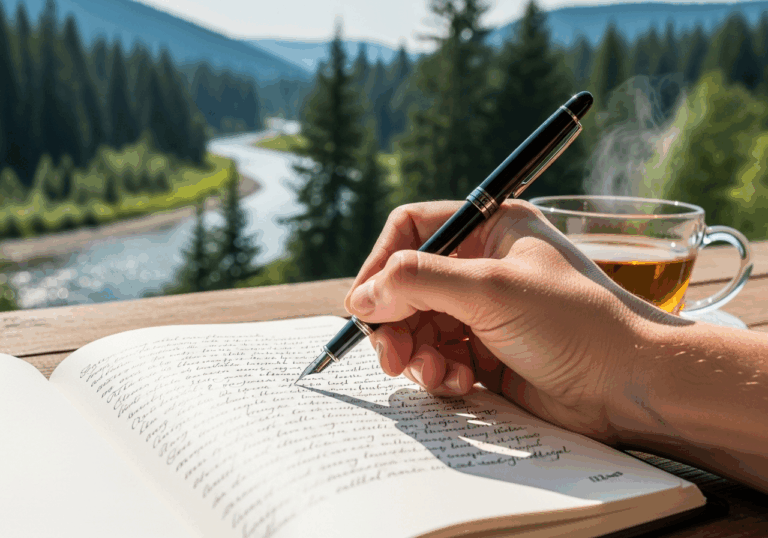Science-Backed Tips
Boost Wellbeing with Gratitude Visualizations
Gratitude exercises can reduce psychological distress by 30%.
📊 Did you know?
💡 Why It Matters
1️⃣
Reducing psychological distress by 30% can significantly enhance overall life satisfaction.
2️⃣
Lower blood pressure linked to gratitude practices can decrease the risk of cardiovascular diseases.
3️⃣
Improved mental health can lead to increased productivity and better social relationships.
✅ Try These Micro-Tips
🎯
Practice gratitude visualizations for 15 minutes each day.
🎯
Write down three things you are grateful for every morning.
🎯
Engage in a gratitude meditation session once a week.
🎯
Share your gratitude with others to enhance social connections.
📚 The study
This empirical review highlights how engaging in gratitude exercises can lead to a remarkable 30% reduction in psychological distress, paving the way for enhanced overall life satisfaction.
Furthermore, the chapter underscores the physical health benefits associated with gratitude practices, such as lower blood pressure, which is crucial in decreasing the risk of cardiovascular diseases.
The implications of improved mental health extend beyond individual wellbeing; they can foster increased productivity and better social relationships, creating a ripple effect that benefits communities at large.
By embracing gratitude, individuals can unlock a pathway to not only feeling better mentally but also improving their physical health, thereby enriching their lives in multifaceted ways.
This compelling evidence serves as a call to action for anyone seeking to enhance their wellbeing through simple yet powerful gratitude visualizations.
Whether you are struggling with stress or simply looking to elevate your quality of life, incorporating gratitude into your daily routine could be the key to unlocking a healthier, happier you.
❓ Frequently Asked Questions ❓
Learn more
What are gratitude visualizations?
Gratitude visualizations are mental exercises where individuals focus on and visualize things they are thankful for. These practices aim to enhance overall well-being and reduce psychological distress.
How do gratitude visualizations affect psychological distress?
Engaging in gratitude visualizations can reduce psychological distress by up to 30%. This reduction significantly enhances overall life satisfaction.
Can gratitude practices improve physical health?
Yes, gratitude practices are linked to lower blood pressure and improved health markers. This can decrease the risk of cardiovascular diseases.
How often should I practice gratitude visualizations?
It is recommended to practice gratitude visualizations for at least 15 minutes each day. Additionally, engaging in a gratitude meditation session once a week can be beneficial.
What are some examples of gratitude exercises?
Examples of gratitude exercises include writing down three things you are grateful for every morning. Sharing your gratitude with others can also enhance social connections.
How does improved mental health relate to productivity?
Improved mental health can lead to increased productivity as individuals feel more motivated and focused. This positive state of mind also fosters better social relationships.
Who can benefit from gratitude visualizations?
Gratitude visualizations can benefit diverse populations, including individuals experiencing psychological distress. They are effective for anyone looking to enhance their overall well-being.
Is there scientific evidence supporting gratitude practices?
Yes, empirical evidence links gratitude imagery to improved well-being and reduced psychological distress. Numerous studies have shown the positive effects of gratitude exercises on mental and physical health.
What is the impact of gratitude on life satisfaction?
Practicing gratitude can significantly enhance overall life satisfaction by fostering a positive outlook. This shift in perspective can lead to a more fulfilling and content life.
How can I incorporate gratitude into my daily routine?
You can incorporate gratitude into your daily routine by setting aside time each morning to write down things you are grateful for. Additionally, consider sharing your gratitude with friends or family to strengthen social bonds.





